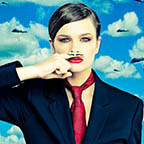Gemini: Understanding its Strengths and Use Cases
Gemini: Understanding its Strengths and Use Cases
- Language is Key: Gemini excels at interpreting detailed and complex text prompts. This is a major advantage for fashion design. You can describe intricate garment details, specific fabric textures, unique poses, and even the mood or overall aesthetic you want to convey.
- Beyond Just Clothing: With Gemini, you can fully imagine an entire fashion scene. Describe the background, lighting, props, and even the hairstyle and makeup of your virtual model. Gemini’s ability to process your entire description cohesively yields significantly more holistic outputs.
- Google Integration: For those already familiar with Google products, Gemini will feel seamless. This makes learning and using the AI image generator that much easier, lowering the barrier to entry.
Choosing the Right Tool: Factors to Consider
- Experience Level: If you’re a beginner, user-friendly platforms like NightCafe Creator or Artbreeder are excellent starting points. They offer simple interfaces with a focus on visual experimentation.
- Creative Control vs. Surprise: Midjourney and Stable Diffusion allow for a great deal of creative control, but they sometimes produce less predictable results. These can be fantastic tools for sparking inspiration or exploring unexpected directions. On the other hand, tools like DALL-E 2 and Gemini tend to be more literal in their interpretation of your descriptions, giving you more direct control over the final output.
- Commercial Use: If your goal is to create professional-quality images for product listings or campaigns, the photorealism and precision offered by DALL-E 2 and Gemini are worth considering.
- Technical Expertise: For those comfortable with coding, StyleGAN2 provides the greatest level of customization and technical control. However, it requires a more advanced skillset to harness its full potential.
In Summary
Gemini is a powerful tool for fashion image generation, especially when photorealistic results and the ability to translate detailed concepts into visuals are priorities. The ultimate choice depends on your needs, skills, and the specific style you’re looking to achieve.
